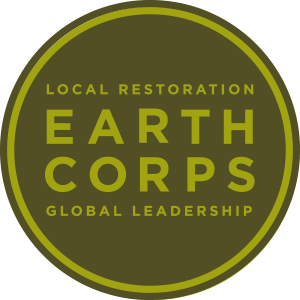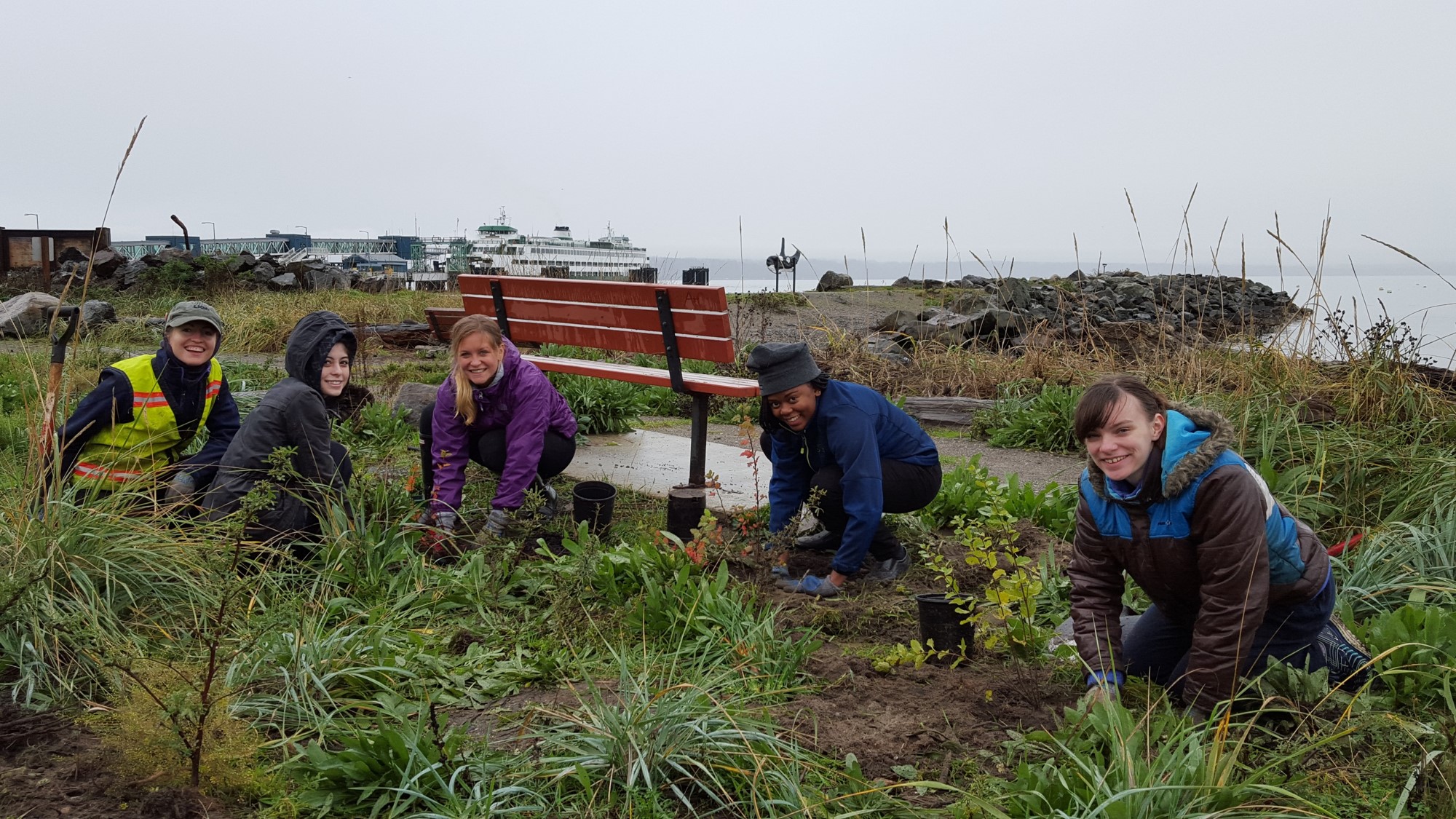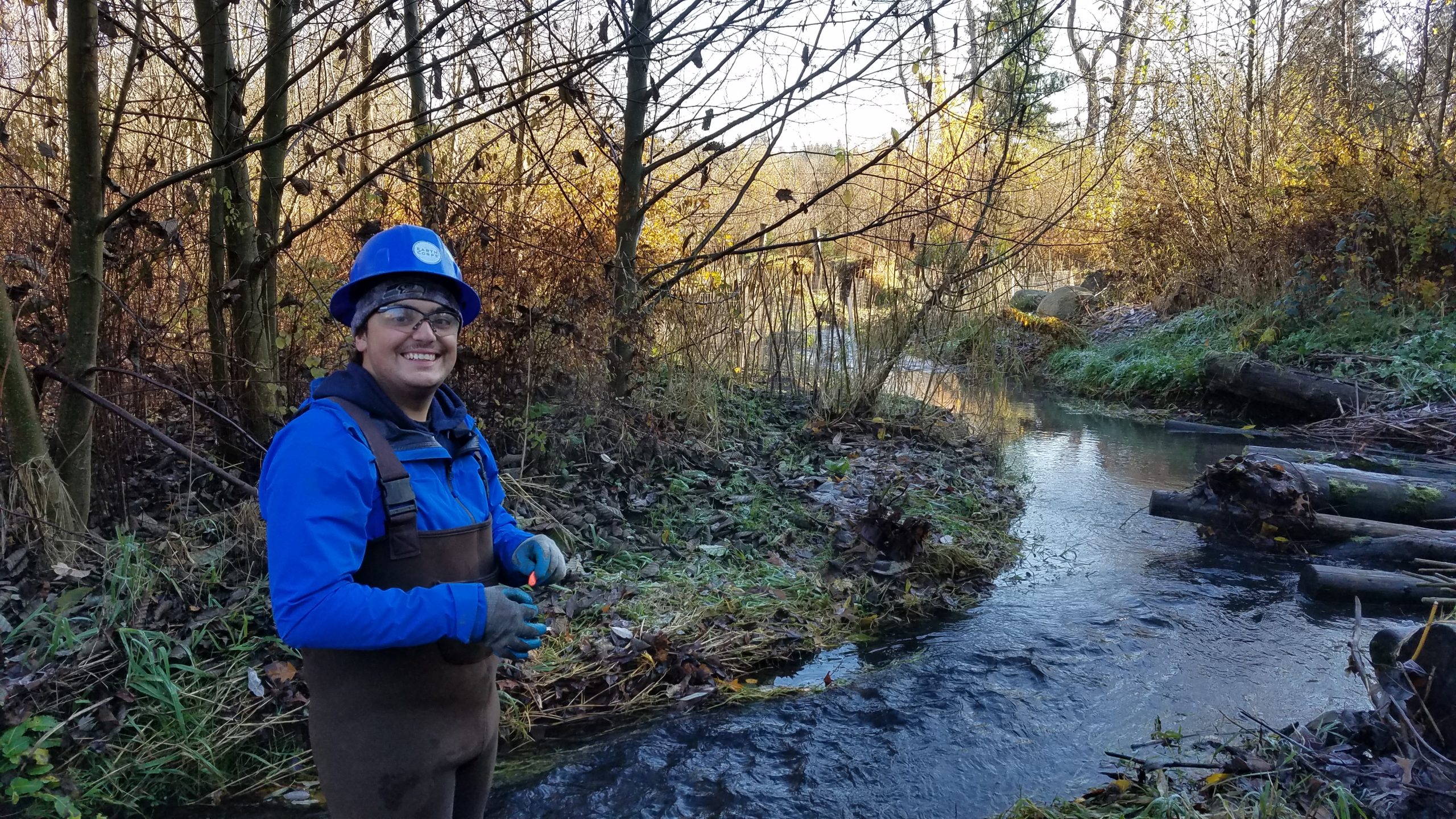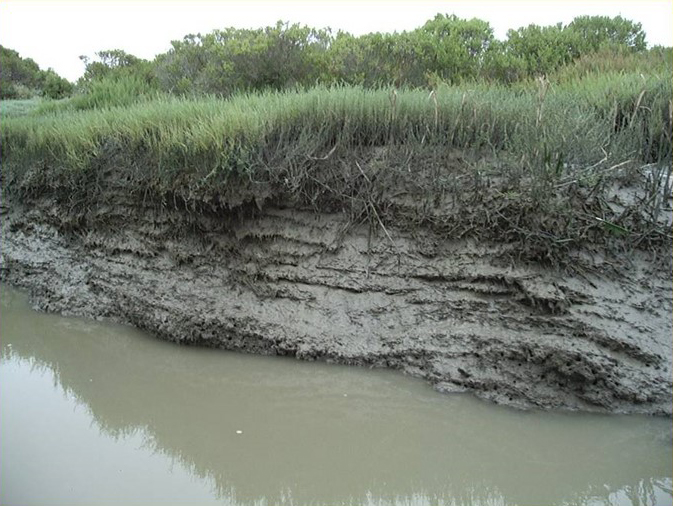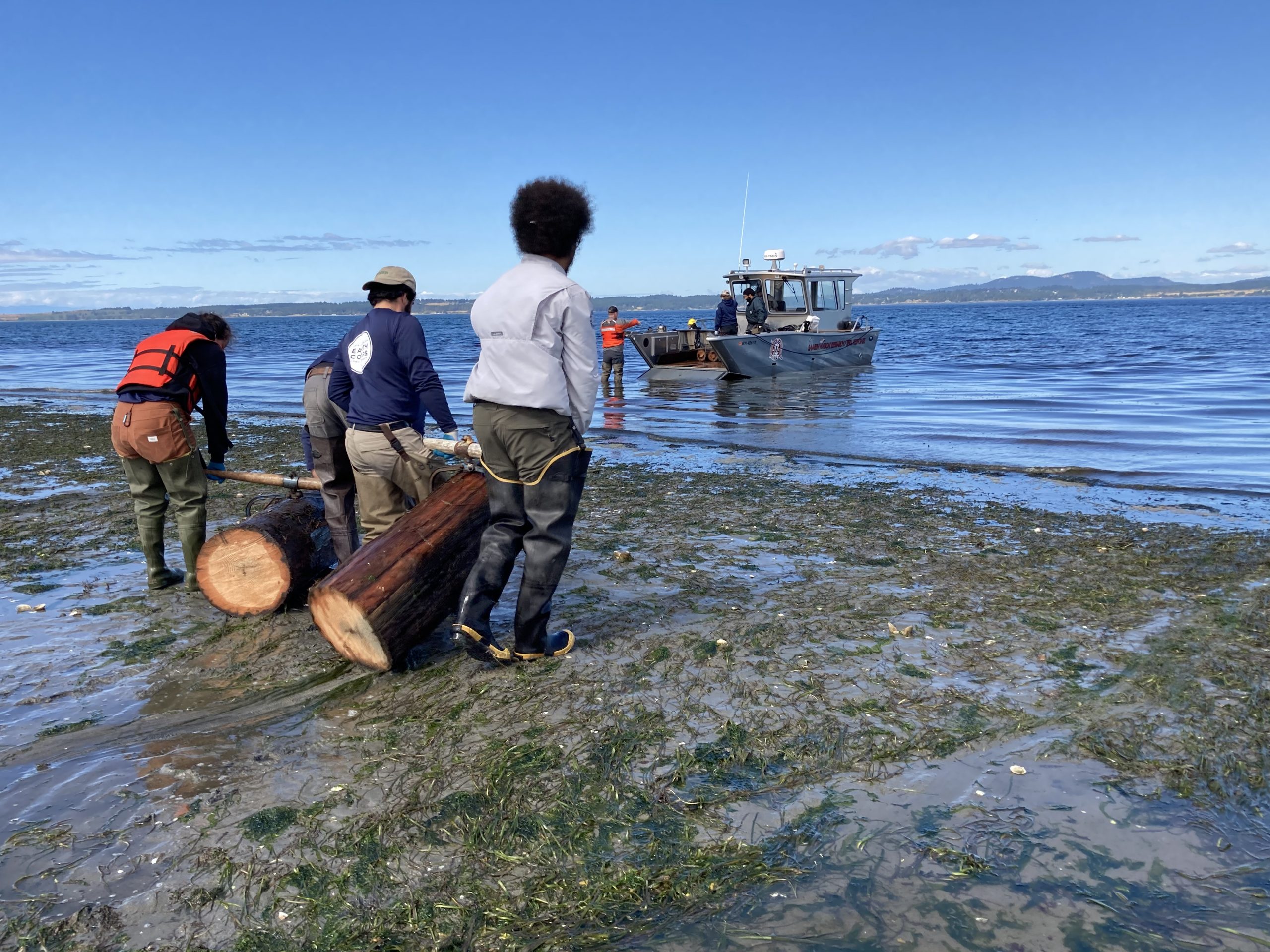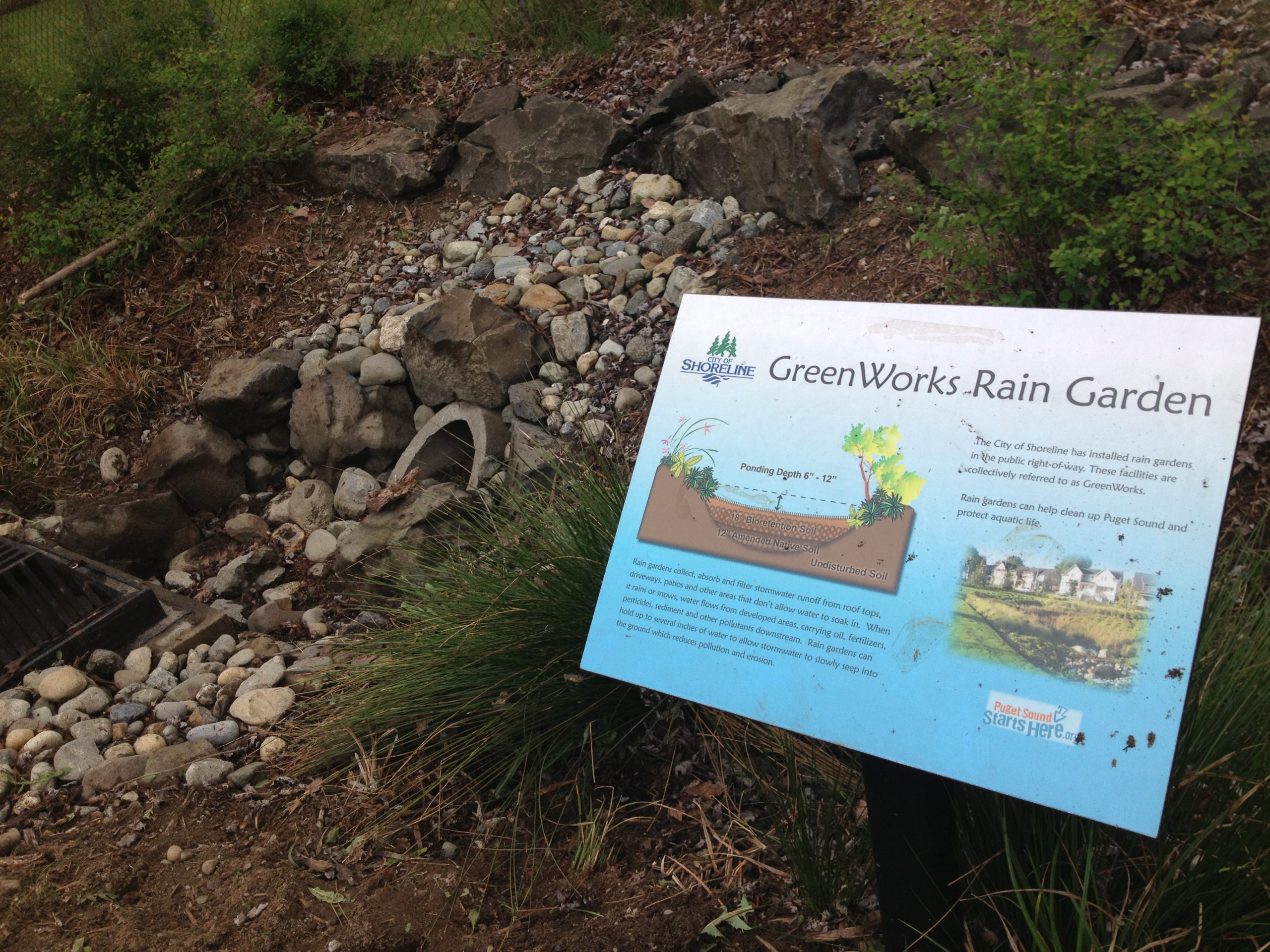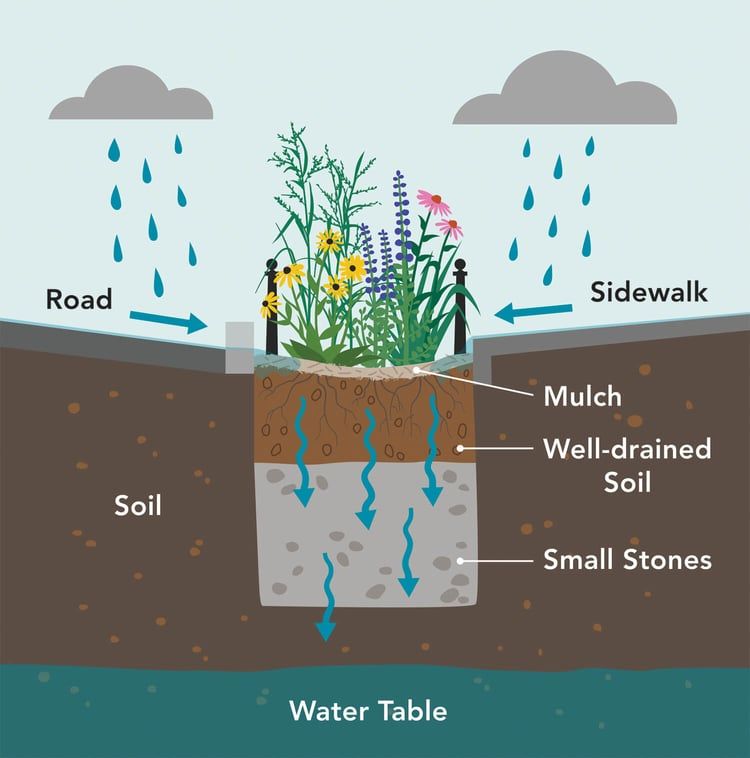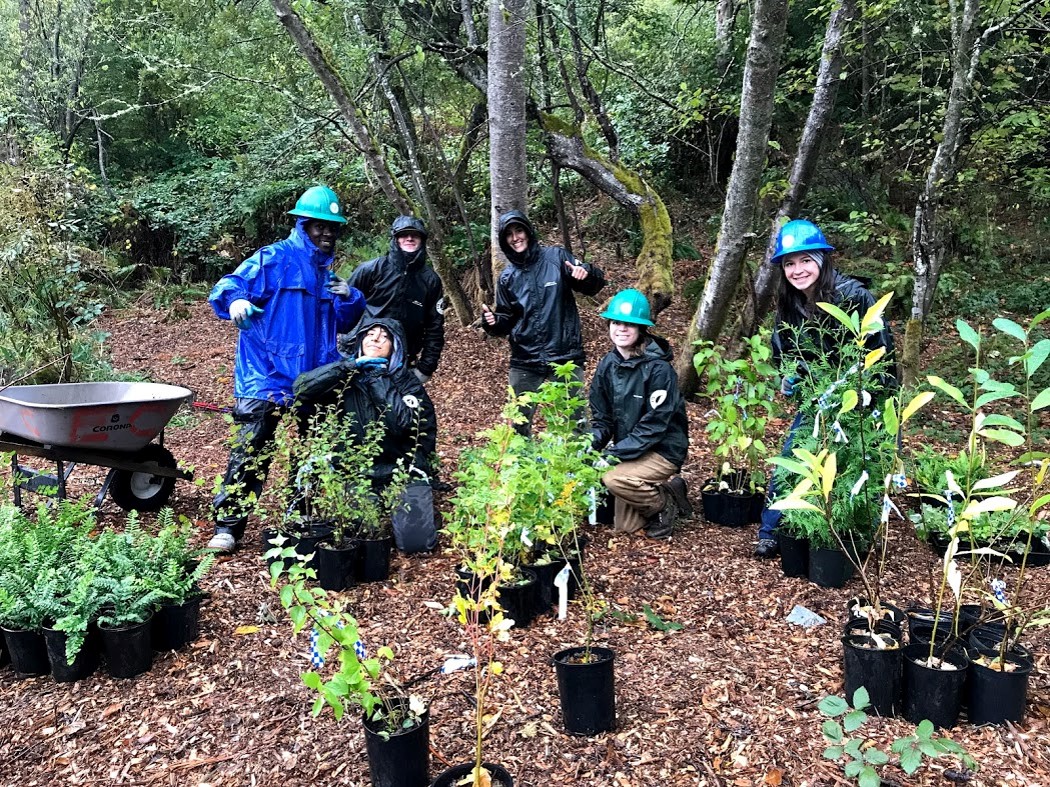“We do not inherit the Earth from our ancestors—we borrow it from our children.”
Puget Sound is a marvel, teeming with natural beauty and diverse wildlife. But below the water’s surface, human activity has significantly degraded the nation’s second-largest estuary, causing a decline in water quality, habitat, and in fish and wildlife populations. That’s where EarthCorps comes in.
Improving water quality and protecting marine life is a central element of EarthCorps’ environmental restoration work. Our work in forests, along waterways, in wetlands, and on shorelines is focused primarily on controlling invasive plants, planting native trees and shrubs, and removing toxic pollutants. Our work directly improves water quality and enhances the health of the entire Puget Sound watershed.
Stream Restoration
Riparian areas, the narrow strips of land adjacent to streams, rivers, lakes, ponds, and wetlands, are an extremely important component of healthy watersheds, providing a buffer between upland areas and open waters.
EarthCorps controls invasive plants, stabilizes banks, and installs native plants in riparian areas to support water quality, flood control, and fish habitat. Over the years, we have worked along on the Green-Duwamish, Hylebos, Skagit, Snoqualmie, Stillaguamish, Samish, and Puyallup rivers.
Why are buffers important?
-
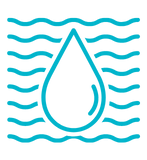
Improve water quality
Buffers help filter pollutants such as nutrients and sediment.
-

Prevent stream bank erosion
Plantings in riparian areas stabilize banks and prevent erosion.
-

Provide shade
Shade helps lower water temperatures to support oxygen levels fish need to flourish.
-

Create habitats
Buffers create habitats for insects that become food sources for fish, birds, and invertebrates.
Wetland Restoration
Wetlands are one of the most valuable and fragile components of a watershed, capable of absorbing vast quantities of water, slowing flooding caused by surges or sea level rise, filtering pollutants, and providing habitat for a vast array of species.
Wetlands play an important role in ecosystems: they teem with life and are as biodiverse as coral reefs and tropical rainforests.
Wetlands are undervalued, often drained or filled for agriculture or development. Researchers believe the US and Canada have lost more than 85% of their wetlands since European colonization of the continent, and loss continues today.
EarthCorps works in both coastal (saltwater-influenced) and inland (freshwater-influenced) wetlands, where we remove invasive species and plant native shrubs and trees in their place. If we reverse the trend of wetland loss—through restoration as well as by stopping filling and draining—we can maintain water quality and mitigate the effects of climate change.
The benefits of wetlands include:
-

Flood and sea level rise protection
Wetlands provide protection against storm surges and shoreline erosion (an acre of wetland can store 1-1.5 million gallons of floodwater).
-
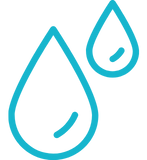
Clean water
Plant roots and microorganisms in the soil absorb pollutants resulting in enhanced filtration and retention of stormwater runoff.
-

Habitat creation
Large woody debris provide important habitat and prey resources for salmon and other marine animals.
-

Climate change mitigation
Coastal wetlands bury carbon in the ground at rates 10x greater than forests.
Learn more about how coastal wetlands help to mitigate climate change
Pollution Clean-up
In partnership with the Samish Indian Nation and the Washington Department of Natural Resources, EarthCorps is helping remove tons of toxic, creosote-coated logs from remote beaches in the San Juan Islands, keeping Puget Sound clean and protecting salmon, orcas, and other marine life.
Piers, docks, and bulkheads were once constructed with lumber from local forests that was treated with creosote, a petroleum-based toxic stew composed of more than 300 chemicals. The use of creosote is now banned, but the toxic chemicals that continually leach from derelict structures and debris in the water and in the air during hot days are deadly to marine life and harmful to humans. Read More
Green Infrastructure
Stormwater runoff carries trash, bacteria, heavy metals, and other pollutants that impact our water quality and harm salmon and other marine life. That’s where nature-based green infrastructure solutions come in.
As our region has grown over the past century, forests and wetlands have been replaced by buildings, roads, and other impervious surfaces. When it rains, the water that flows off roofs and over streets and parking lots isn’t absorbed and filtered naturally by soil and plants. Instead, it drains through gutters and sewers and is discharged directly into the Puget Sound.
A suite of green infrastructure solutions—including rain gardens, bioswales, and restored natural areas such as forests, wetlands, and shorelines—can capture, absorb, and clean rainwater, reduce polluted runoff, and provide welcome greenery in our rapidly growing region. These solutions provide a comparatively efficient, cost-effective approach to stormwater pollution, in combination with more costly capital projects and building code changes that require longer lead times. Green infrastructure also provides multiple benefits—cleaner air, shading and cooling, critical habitat for fish and wildlife, and positive impacts on human health. Read More
